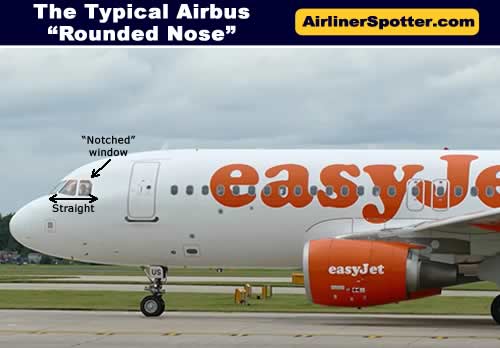The airliner is a narrow-body, and has two engines under the wings
... what type of aircraft is it?
Most jet airliners in service today have two engines, one under each wing, including those manufactured by Boeing and Airbus.
Boeing continues to manufacture the highly successful twin-engine, narrow-body 737 series, while Airbus produces large numbers of its A320 family. The Boeing 757 twin-engine is out of production but still in active usage.
The Bombardier CS Series/Airbus A220 and Embraer E-Jet also have one engine under each wing, as do the regional jets from Antonov.
Popular Twin-Engine Narrow-Body Airliners in Service
| The chart below shows a side-by-side comparison of popular twin-engine narrow-body jetliners in service today, including the Boeing 737, Airbus 320 and the Embraer E175. It also includes the Airbus A220 (originally developed by Bombardier). |
 |
Twin-Engine Narrow-Body Boeing Airliners
Boeing continues to manufacture the highly successful 737 series, with thousands in service around the world, including the popular 737-NG models.
| The Boeing 737 has two engines, a main landing gear consisting of two sets of two wheels, and a triangular section at the front of the tail. The nose is "pointed". See more Boeing 737 photographs and spotting tips |
 |
| The twin-engine, narrow-body American Airlines Boeing 757 identified by its dolphin-shaped nose See more Boeing 757 photographs and spotting tips |
 |
| Chart showing spotting tips between the 757-200 and 757-300 models. The –200 has 3 cabin doors on each side of the fuselage along with emergency exit doors either aft of the wing or over the wing. The -300 has 4 cabins doors. |
 |
Twin-Engine Narrow-Body Airbus Airliners
Airbus produces large numbers of its highly successful A320 family, including not only the A320, but also the A318, A319 and A321.
| The narrow-body Airbus A320 has a rounder nose than Boeing jets and no leading edge "triangle" in front of its tail. The A320 was shortened into the A318 and A319, and stretched into the A321. All have similar design features. See more Airbus A320 photographs and spotting tips |
 |
| The typical Airbus A320-series airliner has a "rounded nose", a windshield straight across the bottom, and its rear windshield window "notched" at the top. |
 |
| Spotting guide for the Airbus A320 family of jetliners: A318, A319, A320 and A321 |
 |
| Airplane spotter's guide for the Airbus A319 and A320 is included below. The A319 has only one emergency exit door over each wing, while the A320 has two exit doors over the wing. |
 |
| The narrow-body, twin-engine Airbus A321 features four exit doors along the fuselage. Shown here is a Swiss A321-200. See more Airbus A321 photographs and spotting tips |
 |
Airbus A220 |
More about the Airbus A220 jet airliner |
 |
|
Embraer Twin-Engine, Wing-Mounted Narrow-Body Airliners
Embraer manufactures a series of narrow-body, single-aisle airliners with twin wing-mounted engines as the Embraer E-Jet and E-Jet E2 Series.
| Shown below is a KLM CityHopper Embraer E190, with its twin jets mounted under the wings, winglets and emergency exit door over the wings. (Photo by DELEHELLE Eric) |
 |
Antonov Twin-Engine, Wing-Mounted Narrow-Body Airliners
The Antonov Company product line includes a range of regional passenger planes, from the 27−seat turboprop Antonov An-38 to the Antonov−148 and Antonov−158 jets.
The An-148/158 airliner is a high-wing monoplane with two turbofan jet engines mounted in pods under the wing. Seating arrangements can be configured for 68-99 passengers. The An-148 and An-158 are capable for use at poorly equipped airfields due to its built-in auto-diagnosis system, auxiliary power unit, high reliability, and its wing configuration. Over 40 Antonov An-148/158 series airliners are in service at several airlines.
 |
| Antonov An-148, a twin-jet regional airliner (photo courtesy of the Antonov Company) |
 |
Comac C919
Under development by Commercial Aircraft Corporation of China (Comac) is the narrow-body C919, which had its first flight in May of 2017. Comac also builds and markets the ARJ21, a twin-engine regional jet. The C919 has an overall length of 127.6 feet. This airliner will be powered by two CFM International LEAP turbofan engines, one under each wing, and carry from 156-168 passengers. It entered service in 2023 with launch customer China Eastern Airlines.
COMAC C919 at takeoff (Photo courtesy of Comac) |
|
ATR 42 and 72
ATR is a Franco-Italian aircraft manufacturer headquartered at Toulouse Blagnac International Airport in Blagnac, France. The company was created in 1981 by Aérospatiale of France (now Airbus) and Aeritalia (now Leonardo) of Italy. Final assembly is at Toulouse..
Its primary products are the ATR 42 and ATR 72 turboprop, short-haul regional aircraft. ATR has sold more than 1,500 aircraft and has over 200 operators in more than 100 countries. The ATR 72 series seats from 30-78 passengers.
The ATR -600 features a state-of-the-art glass cockpit that incorporates the latest innovations in avionics technology. The glass cockpit further reduces ight crew workload and enhances situational awareness while providing better reliability, maintenance cost savings and weight reduction. The ATR -600 series has the widest cabin in the turboprop market.
| Japan Air Commuter ATR 42-600, msn 1218 (Photo by DELEHELLE Eric) |
 |


